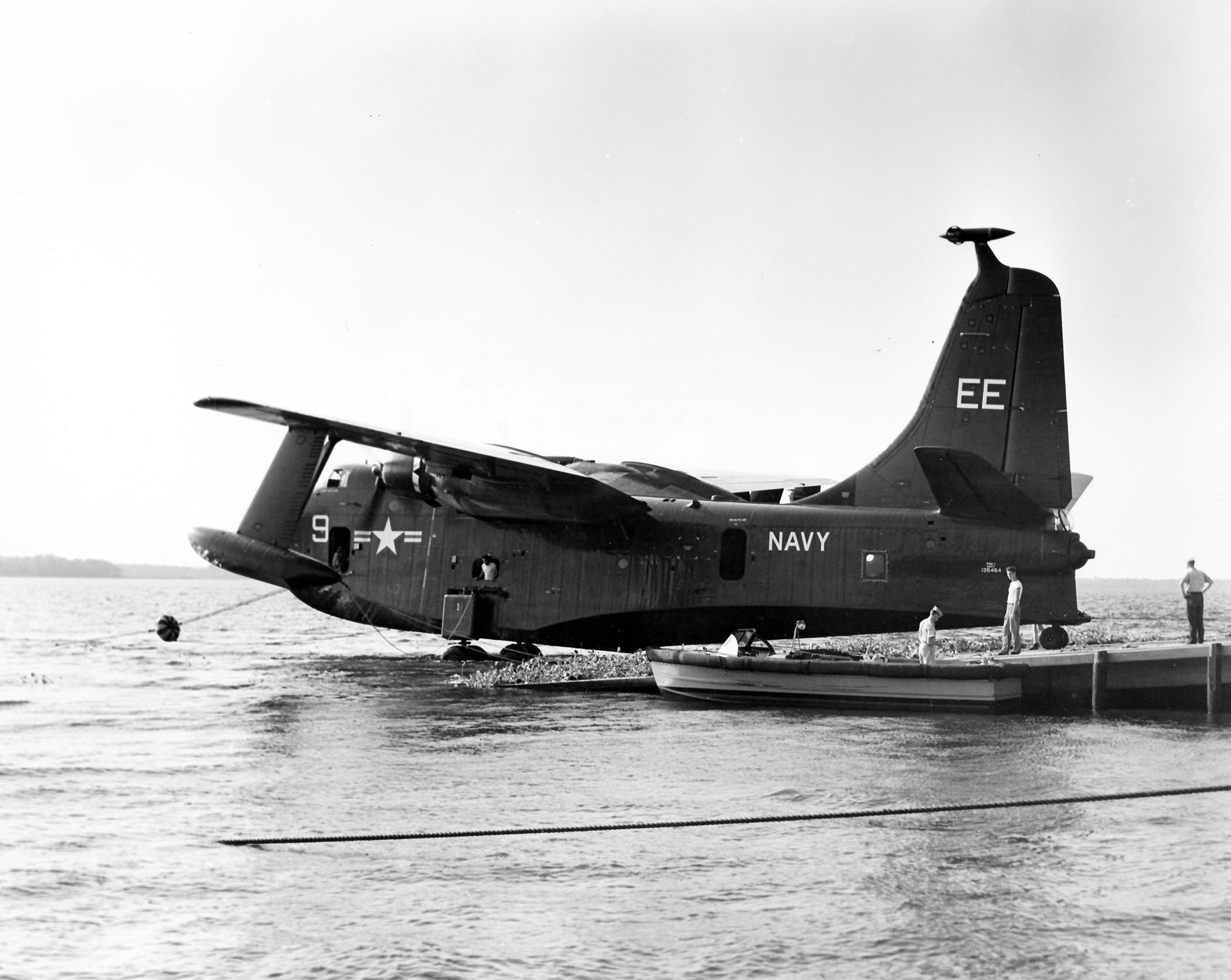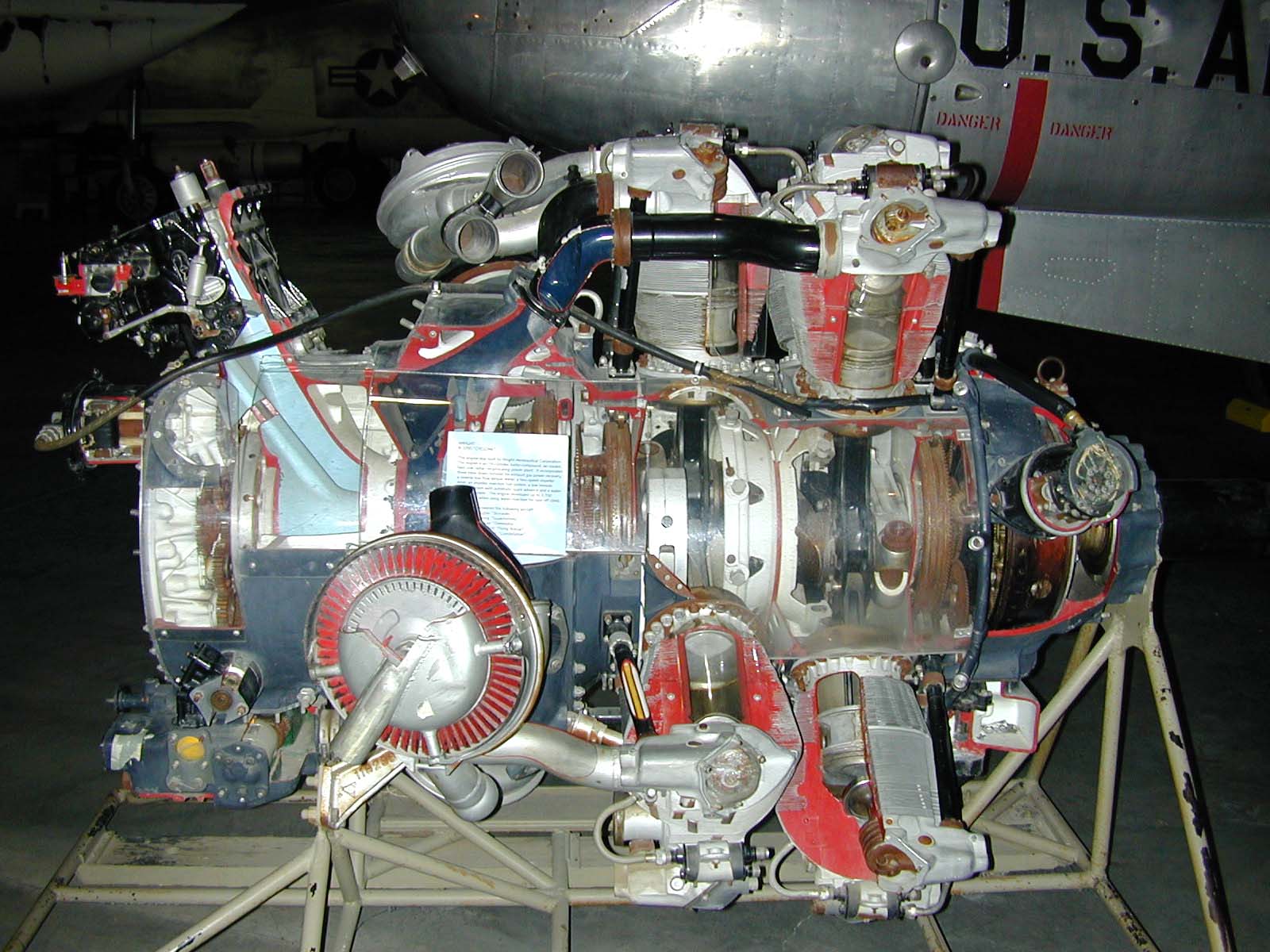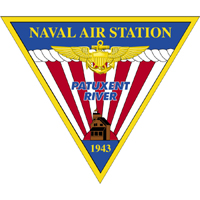|
P5M
The Martin P5M Marlin (P-5 Marlin after 1962), built by the Glenn L. Martin Company of Middle River, Maryland, was a twin piston-engined flying boat that entered service in 1951, and served into the late 1960s with the United States Navy performing naval patrols. It also served with the United States Coast Guard and the French Navy. 285 were produced. Development Built as a successor to the Martin PBM Mariner, PBM Mariner, it had better engines, an improved hull, and a single vertical fin tail. The XP5M Marlin prototypes were based on the last PBM-5 Mariners, the company designation being Model 237. The type was heavily improved, again leading to the P5M-2 (Model 237B), which was redesignated SP-5B. A number of P5M-1 models were also used for training, designated TP-5A (after 1962). Design The Marlin was designed as a Gull wing, gull-winged aircraft to place the engines and propellers high above the spray. Power was provided by two Wright R-3350 radial engines. The rear hul ... [...More Info...] [...Related Items...] OR: [Wikipedia] [Google] [Baidu] |
Martin PBM Mariner
The Martin PBM Mariner was an American Maritime patrol aircraft, patrol bomber flying boat of World War II and the early Cold War era. It was designed to complement the Consolidated PBY Catalina and Consolidated PB2Y Coronado, PB2Y Coronado in service. A total of 1,366 PBMs were built, with the first example flying on 18 February 1939 and the type entering service in September 1940, with the last of the type being retired in 1964. Design and development In 1937 the Glenn L. Martin Company designed a new twin-engined flying boat, the Model 162, to succeed its earlier Consolidated P2Y, Martin P3M and complement the Consolidated PBY Catalina, PBY Catalina and Consolidated PB2Y Coronado, PB2Y Coronado. It received an order for a single prototype XPBM-1 on 30 June 1937.Swanborough and Bowers 1976, p. 318. This was followed by an initial Mass production, production order for 21 PBM-1 aircraft on 28 December 1937.Green 1968, p. 177. To test the PBM's layout, Martin built a ⅜ scale f ... [...More Info...] [...Related Items...] OR: [Wikipedia] [Google] [Baidu] |
Market Time
Operation Market Time was the United States Navy, Republic of Vietnam Navy and Royal Australian Navy operation begun in 1965 to stop the flow of troops, war material, and supplies by sea, coast, and rivers, from North Vietnam into parts of South Vietnam during the Vietnam War. Also participating in Operation Market Time were United States Coast Guard's Squadron One and Squadron Three. The U.S. Coast Guard operated under U.S. Navy command heavily armed patrol boats and large cutters that included 5-inch naval guns used in battle and gunfire support. Radar picket escort ships, based in Guam or Pearl Harbor, provided long-term presence at sea offshore to guard against trawler infiltration. Originally built for World War II convoy duty, and then modified for distant early warning ("DEW") duty in the North Atlantic, their sea keeping capability made them ideal for long-term presence offshore where they provided support for Patrol Craft Fast (PCF) boats, pilot rescue and sampan in ... [...More Info...] [...Related Items...] OR: [Wikipedia] [Google] [Baidu] |
Gull Wing
The gull wing is an aircraft wing configuration, known also as ''Pulaski wings'', with a prominent bend in the wing inner section towards the wing root. Its name is derived from the seabirds which it resembles. Numerous aircraft have incorporated such wings for a diverse range of purposes. The gull wing was commonly used to improve visibility in a high wing arrangement, because such wing could be thinnest by the fuselage, and in theory should limit pilot's view no more than A-pillars of a windscreen in a car body. Gliders were the first aircraft to feature the gull wing, starting with the Weltensegler in 1921; it was not until the record-breaking Fafnir at the end of that decade did the configuration gain popularity. Beyond becoming popular for the next three decades amongst high-performance gliders, various ground-based aircraft and flying boats also adopted various forms of gull wings. It rose to particular prominence in Poland, where the Polish aviation designer Zygmunt P ... [...More Info...] [...Related Items...] OR: [Wikipedia] [Google] [Baidu] |
Wright R-3350
The Wright R-3350 Duplex-Cyclone is an American twin-row, supercharged, air-cooled, radial aircraft engine with 18 cylinders displacing nearly . Power ranged from 2,200 to over 3,700 hp (1,640 to 2,760 kW), depending on the model. Developed before World War II, the R-3350's design required a long time to mature before finally being used to power the Boeing B-29 Superfortress. After the war, the engine had matured sufficiently to become a major civilian airliner design, notably in its turbo-compound forms, and was used in the Lockheed L-1049 Super Constellation airliners into the 1990s. The engine is commonly used on Hawker Sea Fury and Grumman F8F Bearcat Unlimited Class Racers at the Reno Air Races. Its main rival was the , Pratt & Whitney R-4360 Wasp Major, first run some seven years after the Duplex-Cyclone's beginnings. Design and development In 1927, Wright Aeronautical introduced its famous "Cyclone" engine, which powered a number of designs in the 193 ... [...More Info...] [...Related Items...] OR: [Wikipedia] [Google] [Baidu] |
Flying Boat
A flying boat is a type of fixed-winged seaplane with a hull, allowing it to land on water. It differs from a floatplane in that a flying boat's fuselage is purpose-designed for floatation and contains a hull, while floatplanes rely on fuselage-mounted floats for buoyancy. Though the fuselage provides buoyancy, flying boats may also utilize under-wing floats or wing-like projections (called sponsons) extending from the fuselage for additional stability. Flying boats often lack landing gear which would allow them to land on the ground, though many modern designs are convertible amphibious aircraft which may switch between landing gear and flotation mode for water or ground takeoff and landing. Ascending into common use during the First World War, flying boats rapidly grew in both scale and capability during the interwar period, during which time numerous operators found commercial success with the type. Flying boats were some of the largest aircraft of the first half of the 2 ... [...More Info...] [...Related Items...] OR: [Wikipedia] [Google] [Baidu] |
National Naval Aviation Museum
The National Naval Aviation Museum, formerly known as the National Museum of Naval Aviation and the Naval Aviation Museum, is a military and aerospace museum located at Naval Air Station Pensacola, Florida. Founded in 1962 and moved to its current location in 1974, the museum has since 2019 been closed to the public and open only to holders of U.S. Defense Department identification cards. Overview The museum is devoted to the history of naval aviation, including that of the United States Navy, the United States Marine Corps, and the United States Coast Guard. Its mission is "to select, collect, preserve and display" appropriate memorabilia representative of the development, growth and historic heritage of United States Naval Aviation.Coleman, J. F., "Welcome Aboard the New Naval Aviation Museum", ''All Hands - The Magazine of the U.S. Navy'', Department of the Navy, Washington, D.C., April 1975, Volume 52, Issue Number 699, pages 3-4. More than 150 aircraft and spacecraft are on ... [...More Info...] [...Related Items...] OR: [Wikipedia] [Google] [Baidu] |
NAS Patuxent River
Naval Air Station Patuxent River , also known as NAS Pax River, is a United States naval air station located in St. Mary’s County, Maryland, on the Chesapeake Bay near the mouth of the Patuxent River. It is home to Headquarters, Naval Air Systems Command (NAVAIR), the U.S. Naval Test Pilot School, the Atlantic Test Range, Patuxent River Naval Air Museum, and serves as a center for test and evaluation and systems acquisition relating to naval aviation. The station also operates a small outlying field, NOLF Webster. Commissioned on April 1, 1943, on land largely acquired through eminent domain, the air station grew rapidly in response to World War II and continued to evolve through the Cold War to the present. Geography The Naval Air Station Patuxent River site is located in Lexington Park, Maryland, at the confluence of the Patuxent River and the Chesapeake Bay on a peninsula known as Cedar Point. History Genesis: 1937 Prior to 1937 was once prime farmland, consisting o ... [...More Info...] [...Related Items...] OR: [Wikipedia] [Google] [Baidu] |
Smithsonian Institution
The Smithsonian Institution ( ), or simply the Smithsonian, is a group of museums and education and research centers, the largest such complex in the world, created by the U.S. government "for the increase and diffusion of knowledge". Founded on August 10, 1846, it operates as a trust instrumentality and is not formally a part of any of the three branches of the federal government. The institution is named after its founding donor, British scientist James Smithson. It was originally organized as the United States National Museum, but that name ceased to exist administratively in 1967. Called "the nation's attic" for its eclectic holdings of 154 million items, the institution's 19 museums, 21 libraries, nine research centers, and zoo include historical and architectural landmarks, mostly located in the District of Columbia. Additional facilities are located in Maryland, New York, and Virginia. More than 200 institutions and museums in 45 states,States without Smithsonian ... [...More Info...] [...Related Items...] OR: [Wikipedia] [Google] [Baidu] |
Phú Quốc
Phú Quốc () is the largest island in Vietnam. Phú Quốc and nearby islands, along with the distant Thổ Chu Islands, are part of Kiên Giang Province as Phú Quốc City, the island has a total area of and a permanent population of approximately 179,480 people. Located in the Gulf of Thailand, the island city of Phú Quốc includes the island proper and 21 smaller islets. Dương Đông ward is located on the west coast, and is also the administrative and largest town on the island. The other ward is An Thới on the southern tip of the island. Its primary industries are fishing, agriculture, and a fast-growing tourism sector. Phú Quốc has achieved fast economic growth due to its current tourism boom. Many infrastructure projects have been carried out, including several five-star hotels and resorts. Phú Quốc International Airport is the hub connecting Phú Quốc with mainland Vietnam and other international destinations. From March 2014, Vietnam allowed all for ... [...More Info...] [...Related Items...] OR: [Wikipedia] [Google] [Baidu] |
Mekong
The Mekong or Mekong River is a trans-boundary river in East Asia and Southeast Asia. It is the world's List of rivers by length, twelfth longest river and List of longest rivers of Asia, the third longest in Asia. Its estimated length is , and it drains an area of , discharging of water annually. From the Tibetan Plateau the river runs through China, Myanmar, Laos, Thailand, Cambodia, and Vietnam. The extreme seasonal variations in flow and the presence of rapids and waterfalls in the Mekong make navigation difficult. Even so, the river is a major trade route between western China and Southeast Asia. Names The Mekong was originally called ''Mae Nam Khong'' from a contracted form of Tai language, Tai shortened to ''Mae Khong''. In Thai and Lao, ''Mae Nam'' ("Mother of Water[s]") is used for large rivers and ''Khong'' is the proper name referred to as "River Khong". However, ''Khong'' is an archaic word meaning "river", loaned from Austroasiatic languages, such as Vietnamese ... [...More Info...] [...Related Items...] OR: [Wikipedia] [Google] [Baidu] |









